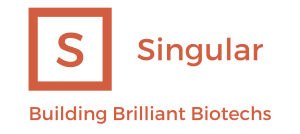What is an Unstructured Interview?
Unstructured interviews tend to happen in smaller companies and early-stage start-ups, particularly where there isn’t a dedicated HR function. They tend to be informal and conversation-led, without a consistent set of questions, which means that it’s a highly subjective assessment.
Why Do Them That Way?
Your interviewer(s) might have the philosophy of “let’s see where this conversation takes us” believing it’s the best way to get the right people into the business. It could also be due to pressures of time and lack of specialist expertise in hiring, both of which are common in early-stage startup.
Alternatively, it could be the concluding ‘coffee break interview’ with the whole team after you’ve made it through the structured interview process. ‘Meet the Team’ interviews, while they might come over as a casual chat, are opportunities to evaluate team fit and to give the team the opportunity to highlight any red flags the interview panel didn’t see.
The Unstructured Interview
I’m going to focus on the ‘flying by the seat of our pants’ interview approach where this is the only interview format. It’s here, particularly, where you must be on the ball and well-prepared.
What’s the Interviewer Looking For? Fit, mostly.
Often, this is a meandering chat where they’re trying to gauge your personality and how well you’d fit into the team they’re building. The conversation might lean more towards the personal and ideological than the experiential. You might chat about the future of your field and how that intersects with the company’s mission and your own career ambitions, rather than what’s on your CV.
Sure, they’re interested in your professional experience and background, but they’re probably more focussed on whether they’d like to work with you (I know, it’s highly subjective) and how you would fit into both the team and the wider company culture.
Location, Location, Location?
The office is a common meeting ground for unstructured interviews, but there are quirkier versions you might have to navigate:
- Coffee shop/cafe? Absolutely.
- During a walk? I’ve known it to happen.
- Pub or cafe? It’s perhaps more common than you think.
Sometimes the location is a deliberate choice to see how you perform in a non-traditional setting, and sometimes it’s simply the personal preference of the interviewer. The setting, though, can be a clue about your interviewer and/or the company and how they operate.
The Pub/Cafe Dilemma: Drinks, Food, and the Awkward Bill Moment
If your interview happens to be in a pub or cafe, here’s the deal:
- Order food that’s easy to manage and that you can eat while talking. You don’t want to be wrestling with your food while trying to discuss the future of therapeutic robotics.
- Avoid ordering anything that increases the likelihood of your own discomfort or embarrassment (spaghetti is a no!).
- Avoid messy finger food, or at least use cutlery and be conscious of hygiene when it comes to shaking your interviewer’s hand afterwards.
- Take your interviewer’s lead when it comes to drinks. If they order an alcoholic drink, feel free to order one as well if you wish – but limit it to one. I would suggest you stick to soft drinks, personally.
It’s generally expected that your interviewer will pay the bill but be prepared to pay for your own meal just in case. When it’s time to pay, it’s polite to offer to contribute.
Pro tip: Ditch the ketchup! If you order a burger and turn yourself into a ketchup canvas, that anecdote will stick to you like glue, and will be forever used by people like me as an amusing teachable ‘true story’!
Taking Opportunities to Highlight Your Key Points
The lack of structure doesn’t mean lack of preparation on your part! It does mean you’ll need to be proactive about weaving your key skills, achievements, and experiences into the conversation. It also means there will be opportunities for you to steer the conversation to the points you’d like to make.
Rehearse a 30-second summary of what you do, your fit for the role, and what you’re looking for. Have your career highlights prepared, rehearsed, and ready to thread into the conversation. Having these at your fingertips allows you to quickly drop your key points into the conversation.
Keeping On Track
If the conversation starts veering off into, for example, the interviewer’s own success story about when they introduced a new technology into a process, you can use open-ended questions to steer it back to the interview by asking, “That’s interesting, how do you think the company culture here supports innovation?”
Instead of just nodding along when your interviewer talks about the company’s growth, you could use it as an opportunity to share your own contributions to growth in your career. Or, if you want to understand more about the company, you could ask, “What were some of the key strategies that contributed to that growth?”
If they mention the team’s collaborative spirit, you could respond with your own success creating collaborative project teams or how you’ve enjoyed great company culture resulting from a collaborative environment and how you see yourself contributing to it in this role.
Your Evaluation of Them
Yes, this is a two-way evaluation street! An unstructured interview can reveal a lot, so pay attention.
- Are they interested in learning about you or is this interview a monologue about their own career and successes?
- Are they more interested in which rugby team you support, or your experience in fitting out a lab from scratch on a tight budget?
- Are they trying to get you to give them the step-by-step technical details of how you would solve a problem, or are they more interested in how you might approach problems like these in general?
While you’re busy answering their questions and showcasing your awesomeness, don’t forget to keep your own radar up. Let’s identify some red flags you should be watching for.
Red Flag Examples
- Consistently talking over you.
- Evasiveness when you ask about company culture or team dynamics.
- Taking detailed notes about step-by-step technical details.
- Lack of clarity about the job role or expectations.
- Negative comments about current or former employees.
- Disrespectful or condescending tone.
- Lack of interest or engagement.
- Checking their phone constantly.
- Making inappropriate or unprofessional comments.
Discrimination Red Flags
Because the interview is an unstructured conversation without a set direction, it can take turns into territory that other interviews are designed to avoid.
Be watchful for microaggressions, off-hand enquiries about maternity absences or ‘starting a family’, ‘jokes’ about how GenX can’t work smartphones etc. Legal implications aside, these are strong clues about your interviewer, and I highly recommend you listen to your intuition.

The Upside
The unstructured interview can be fun!
It can be far less daunting and far more insightful for you than multiple rounds of dry Q&A interview panels. I’ve known people to come out of unstructured interviews, positively buzzing because they’ve connected with like-minded scientists about an exciting scientific advancement.
Make the most of it and show them how you would rock that role and be a positive cultural addition. Make your mark! (But maybe not with condiments …)
~ Fiona







Leave A Comment